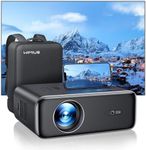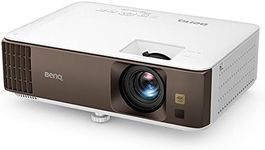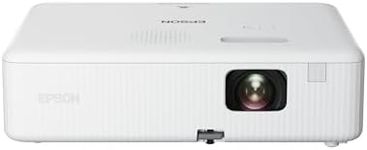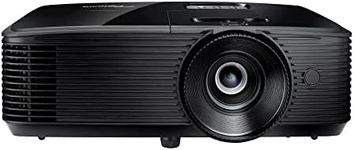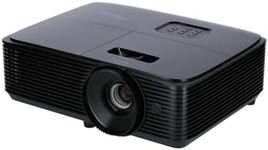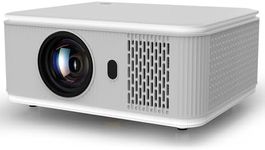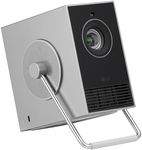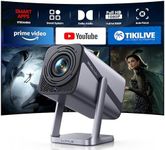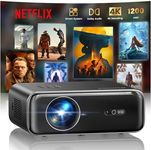Buying Guide for the Best Quiet Projector
When choosing a quiet projector, it's important to consider not only the noise level but also other key specifications that will affect your viewing experience. A quiet projector is ideal for environments where you want to minimize distractions, such as home theaters, classrooms, or offices. To find the best fit for your needs, you'll need to balance the projector's noise level with other features like brightness, resolution, and connectivity options. Understanding these specifications will help you make an informed decision and ensure that your projector meets your specific requirements.Noise LevelNoise level in projectors is measured in decibels (dB) and indicates how loud the projector will be when in operation. This is important because a noisy projector can be distracting, especially in quiet environments like home theaters or small meeting rooms. Noise levels typically range from 25 dB to 40 dB. A projector with a noise level below 30 dB is considered quiet and suitable for environments where silence is crucial. If you plan to use the projector in a setting where noise is a concern, aim for a model with a lower dB rating.
BrightnessBrightness in projectors is measured in lumens and determines how well the projector can display images in different lighting conditions. This is important because a brighter projector can produce clearer images in well-lit rooms. Brightness levels can range from 1,000 to over 3,000 lumens. For dark rooms, a projector with 1,000 to 2,000 lumens is usually sufficient. For rooms with some ambient light, consider a projector with 2,000 to 3,000 lumens. Choose a brightness level based on the lighting conditions of the room where you will use the projector.
ResolutionResolution refers to the number of pixels that make up the image displayed by the projector. Higher resolution means more detail and clarity in the image. Common resolutions include 720p, 1080p, and 4K. For general use, 720p may be adequate, but for high-definition content or larger screens, 1080p or 4K is preferable. Consider the type of content you will be viewing and the size of the screen to determine the appropriate resolution for your needs.
Throw DistanceThrow distance is the distance between the projector and the screen, which affects the size of the projected image. This is important because it determines how far back you need to place the projector to achieve the desired image size. Projectors are categorized as short throw, standard throw, or long throw. Short throw projectors can create large images from a short distance, making them ideal for small rooms. Standard throw projectors are suitable for medium-sized rooms, while long throw projectors are best for large spaces. Consider the size of your room and the placement options when choosing the throw distance.
ConnectivityConnectivity options determine how you can connect the projector to other devices, such as computers, DVD players, or streaming devices. This is important because it affects the versatility and ease of use of the projector. Common connectivity options include HDMI, USB, and wireless connections. HDMI is the most common and provides high-quality audio and video. USB ports are useful for connecting storage devices, while wireless connectivity allows for streaming from smartphones or tablets. Consider the devices you plan to connect to the projector and ensure it has the necessary ports and connectivity options.

